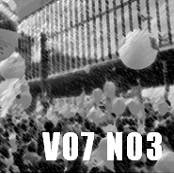Abstract
The morphology of metropolis of São Paulo is the result of complex relations between social process and biophysical support, presenting qualities and challenges inherent to its size (one of the four largest metropolises on the planet) and its insertion in the Brazilian socio-space process. In this context, the objective is to understand aspects of its morphological structure and its open spaces system. From visual analysis of satellite images and the use of Google Street View software, the Laboratório Quadro do Paisagismo da Faculdade de Arquitetura e Urbanismo da Universidade de São Paulo – Lab QUAPÁ – produced detailed thematic cartography in GIS about morphological patterns and open spaces, block by block, for all juxtaposed urbanization of São Paulo Metropolis. The analysis of this thematic mapping is also supported by mapped census data and in a big collection of photos taken from overflights of the metropolis. This article provides a summary of the main results, with emphasis on open spaces system also addressing reflections on appropriations public of this system, resulting from the orientation experience of many scientific works undergraduate and graduate. This is a synthesis that shows a strong process if conurbation of the metropolis, but still showing a remarkable predominance of morphologies. The open spaces system of the metropolis contains significant remnants of Atlantic Forest, but is, as a rule, little competent to meet the various social and environmental demands.
References
CALDEIRA, Teresa. Cidade de muros: crime, segregação e cidadania em São Paulo. São Paulo: Editora 34; EDUSP, 2000.
DENATRAN DEPARTAMENTO NACIONAL DE TRÂNSITO. Frota de veículos. Brasília: DENATRAN, 2016. Disponível em: http://www.denatran.gov.br/frota2015.htm. Acesso em: 10 set. 2016.
EMPLASA EMPRESA PAULISTA DE PLANEJAMENTO METROPOLITANO. EMPLASAGEO. Disponível em: http:// http://www.emplasageo.sp.gov.br. Acesso em 12 out. 2016.
IBGE INSTITUTO BRASILEIRO DE GEOGRAFIA E ESTATÍSTICA -. Projeção da população do Brasil e das Unidades da Federação. Rio de Janeiro: IBGE, 2016. Disponível em: http://www.ibge.gov.br/apps/populacao/projecao/. Acesso em: 13 jul. 2016
MACEDO, Silvio; ROBBA, Fabio. Praças Brasileiras. São Paulo: EDUSP, 2002.
MACEDO, Silvio; SAKATA, Francine. Parques urbanos no Brasil. São Paulo: EDUSP, 2003.
MACEDO, Silvio. Paisagismo Contemporâneo na Virada do Século 1990 – 2010. São Paulo: Edusp, 2012.
RUPF, Lilian Dazzi Braga; QUEIROGA, Eugênio Fernandes. Lugares públicos como potencialidades: uma leitura urbana do centro histórico de São Paulo. Paisagem e Ambiente, São Paulo, n. 35, p. 139-159, oct. 2015. ISSN 2359-5361, p139-159. doi: http://dx.doi.org/10.11606/issn.2359-5361.v0i35.
QUEIROGA, Eugenio. A megalópole e a praça: o espaço entre a razão de dominação e a razão comunicativa. 2001. 351 p. Tese (Doutorado em Arquitetura e Urbanismo) – Faculdade de Arquitetura e Urbanismo, Universidade de São Paulo, São Paulo, 2002.
QUEIROGA, Eugenio. Dimensões públicas do espaço contemporâneo: resistências e transformações de territórios, paisagens e lugares urbanos brasileiros. 2012. 284 p. Tese (Livre docência em Arquitetura e Urbanismo) – Faculdade de Arquitetura e Urbanismo, Universidade de São Paulo, São Paulo, 2012.
I accept that PARC Research in Architecture and Building Construction journal perform, on the original file approved for publication, revisions and modifications in orthoghaphic, grammar and standard issues.
I give to PARC Research in Architecture and Building Construction journal the rights of first publication of the revised version of my paper, licensed under the 'Creative Commons Attribution' license (which allows sharing the work with the recognition of first authorship and publication in this journal).


